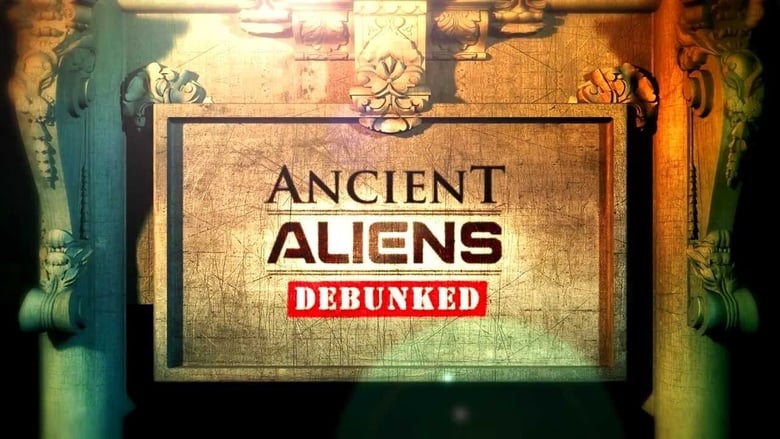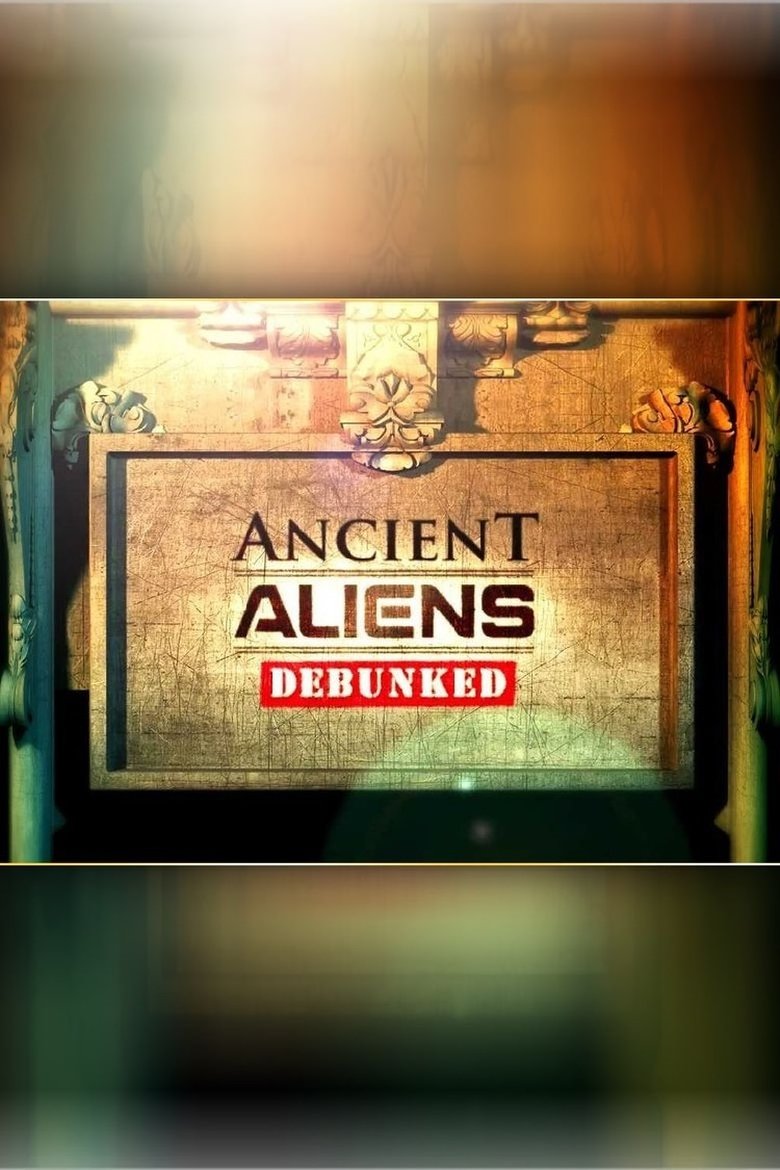Loading


Ancient Aliens Debunked
Genres
Documentary
Overview
Ancient Aliens Debunked is a 3 hour refutation of the theories proposed on the History Channel series Ancient Aliens. It is essentially a point by point critique of the "ancient astronaut theory" which has been proposed by people like Erich von Däniken and Zecharia Sitchin as well as many others. The film covers topics like: Ancient building sites: Puma Punku, The Pyramids, Baalbek, Incan sites, And Easter Island. Ancient artifacts: Pacal's rocket, the Nazca lines, the Tolima "fighter jets", the Egyptian "light bulb", Ufo's in ancient art, and the crystal skulls. Ancient text issues: Ezekiel's wheel, Ancient nuclear warfare, Vimana's, the Anunnaki, and the Nephilim.
Details
Budget
$15000
Revenue
$0
Runtime
191 min
Release Date
2012-09-27
Status
Released
Original Language
English
Vote Count
18
Vote Average
6.583
Cast
Meet the talented actors who bring the movie to life.
Chris White
Michael S. Heiser
Erich von Däniken
Himself
David Childress
Himself
Giorgio A. Tsoukalos
Himself
Similar Movies
Explore movies similar to this one that you might also enjoy.
0.0
True Legends – Episode 1: Technology of the Fallen
Timothy Alberino and the GenSix Productions film crew head to the High Plain (“Altiplano”) of Peru and Bolivia on the shores of legendary Lake Titicaca to investigate some of the most compelling evidence on the planet of fallen angels and their giant hybrid offspring in the antediluvian past. This full length feature film includes cutting edge research that uncovers and publishes, for the first time, historical documentation which proves beyond a shadow of doubt that colossal giants once roamed the lands of Ecuador, Peru and Bolivia; as well as reveals never before seen mind-blowing geoglyphs engraved on the surface of the earth and stretching for hundreds of miles over the Altiplano. Join the crew as they examine the megalithic mysteries of Tiwanaku and confirm that both the Inca and the Spanish chroniclers were well aware of who built Puma Punku, and when.
2015-08-01 | en
9.8
Aliens Expanded
Exploring James Cameron’s beloved science-fiction epic from teeth to tail, Aliens Expanded is truly the most in-depth, passionate and innovative celebration of a movie ever attempted.
2024-06-28 | en
5.5
The Hidden History of Egypt
Egyptians were famed for their extravagant building techniques and extraordinary gods, but what about the ordinary citizens? How did they lead their day to day lives? What did they do for entertainment? Did they believe in their gods? Discover astonishing facts that throw new light on our understanding of the Ancient Egyptians.
2002-01-01 | en
5.0
The Hidden History of Rome
Rome was famed for the decadence of its ruling class, however, what about the ordinary citizens of these ancient cultures? How did they lead their day to day lives in an age when the average life expectancy was little more than forty? Did they believe in the Pagan Gods? What were their sex lives like? What did they do for entertainment? How ordinary Romans lived is, for the most part ...
2002-01-01 | en
0.0
The Auschwitz Trial
The biggest trial of Nazi war crimes ever: 360 witnesses in 183 days of trial - a stunning and gripping portrayal of the most terrible massacre in history.
2013-01-02 | de
0.0
The Story of Yosemite National Park
Mountain men Joseph R Walker was probably the first non-Indian to see Yosemite, in 1833, but not until the California militia entered the valley rounding up the Ahwahneechee Indians was the region discovered. In June, 1864, President Abraham Lincoln signed the Yosemite Grant, making it a California State Park. It became famous through the writings of Horace Greeley and the efforts of John Muir. Cinematographer Dennis Burkhart captures in this video the magnificence of Yosemite Valley (El Capitan, Bridalveil Fall, Half Dome), the High Sierra (John Muir Trail, Tuolumne Meadows, Tioga Pass) and the Mariposa Grove of giant sequoias. The camera catches the wildlife that roams the 1,1170 square miles of Yosemite, i.e. the mule deer, mountain lion, black bear, coyotes, bighorn sheep, and the rare peregrine falcon. This video reveals why 3.8 million visitors come each year and stand before awe-inspiring panoramas they will never forget.
1991-01-01 | en
6.8
The Day Hitler Died
The story of Hitler’s final hours told by people who were there. This special features exclusive forgotten interviews, believed lost for 65 years, with members of Hitler’s inner circle who were trapped with him in his bunker as the Russians fought to take Berlin. These unique interviews from figures such as the leader of the Hitler Youth Artur Axmann and Hitler’s secretary Traudl Junge, have never before been seen outside Germany. Using rarely seen archive footage and dramatic reconstruction, this special tells the story of Adolf Hitler’s final days in his Berlin bunker.
2015-12-18 | en
8.0
Objectif femmes
| pt
7.3
Flatball: A History of Ultimate
On May 8, 1989, Sports Illustrated ran an article about Ultimate frisbee… about a team with no name hailing from New York City that was about to change the sport forever. From its 1968 New Jersey birth to its unanimous 2015 recognition by the International Olympic Committee, FLATBALL circles the globe to showcase four decades of world-class Ultimate and goes even further: to a set of fields in the Middle East to understand and demystify the unique spirit of the game.
2016-10-23 | en
7.0
Treasures of the Anglo-Saxons
In this hour-long documentary, Oxford academic Janina Ramirez tours the country in search of Anglo-Saxon art treasures. Her basic thesis - and it is a plausible one - is that we should not look upon their era as a "dark age" as compared, for example, to Roman times, but rather celebrate it as an age in which creativity flowered, especially in terms of artistic design as well as symbolism. She shows plenty of good examples, ranging from the Franks Casket to the Staffordshire Hoard, and the Lindisfarne Gospels. - l_rawjalaurence
2010-08-10 | en
7.0
World War A: Aliens Invade Earth
Leading scientists and researchers weigh in on the scenarios that might unfold if aliens find us and decide to visit Earth. Should we even be searching for extraterrestrial life? What are the risks of reaching out, and what are the risks if the Earth is "found" by aliens?.
2016-01-01 | en
7.7
Diana: In Her Own Words
Using home videos recorded by her voice coach, Diana takes us through the story of her life.
2017-08-06 | en
7.4
Stanley Kubrick: A Life in Pictures
With commentary from Hollywood stars, outtakes from his movies and footage from his youth, this documentary looks at Stanley Kubrick's life and films. Director Jan Harlan, Kubrick's brother-in-law and sometime collaborator, interviews heavyweights like Jack Nicholson, Woody Allen and Sydney Pollack, who explain the influence of Kubrick classics like "Dr. Strangelove" and "2001: A Space Odyssey," and how he absorbed visual clues from disposable culture such as television commercials.
2001-05-02 | en
6.9
Accidental Anarchist
Carne Ross was a government highflyer. A career diplomat who believed Western Democracy could save us all. But working inside the system he came to see its failures, deceits and ulterior motives. He felt at first hand the corruption of power. After the Iraq war Carne became disillusioned, quit his job and started searching for answers.
2017-07-23 | en
7.5
1997: The Birth of the Camera Phone
On June 11th, 1997, Philippe Kahn created the first camera phone solution to share pictures instantly on public networks. The impetus for this invention was the birth of Kahn's daughter, when he jerry-rigged a mobile phone with a digital camera and sent photos in real time. In 2016 Time Magazine included Kahn's first camera phone photo in their list of the 100 most influential photos of all time.
2017-06-29 | en
8.7
The Hobbit Enigma
The Hobbit Enigma examines one of the greatest controversies in science today: what did scientists find when they uncovered the tiny, human-like skeleton of a strange creature, known to many as the Hobbit, on the Indonesian island of Flores in 2003?
2008-11-04 | en
0.0
Memory Books
In Uganda, AIDS-infected mothers have begun writing what they call Memory Books for their children. Aware of the illness, it is a way for the family to come to terms with the inevitable death that it faces. Hopelessness and desperation are confronted through the collaborative effort of remembering and recording, a process that inspires unexpected strength and even solace in the face of death.
2008-05-01 | en
6.0
The Wild Blue Yonder
An alien narrates the story of his dying planet, his and his people's visitations to Earth and Earth's self-made demise, while human astronauts in space are attempting to find an alternate planet for surviving humans to live on.
2005-09-05 | en
7.7
When We Were Kings
It's 1974. Muhammad Ali is 32 and thought by many to be past his prime. George Foreman is ten years younger and the heavyweight champion of the world. Promoter Don King wants to make a name for himself and offers both fighters five million dollars apiece to fight one another, and when they accept, King has only to come up with the money. He finds a willing backer in Mobutu Sese Suko, the dictator of Zaire, and the "Rumble in the Jungle" is set, including a musical festival featuring some of America's top black performers, like James Brown and B.B. King.
1996-10-25 | en
9.2
Images of the Estado Novo 1937-45
Resorting on a vast archive material of newsreels, photographs, letters, family videos, fiction movies, diary and popular songs excerpts, the documentary reassesses the legacy of the dictatorial period of Getúlio Vargas (1937-1945). Through the comparison and analysis of these heterogeneous records, produced for different purposes, from political propaganda to family celebration, the film explores the several layers of the political web of the Estado Novo, exposing its external inspirational sources, functionality and contradictions.
2016-04-15 | pt